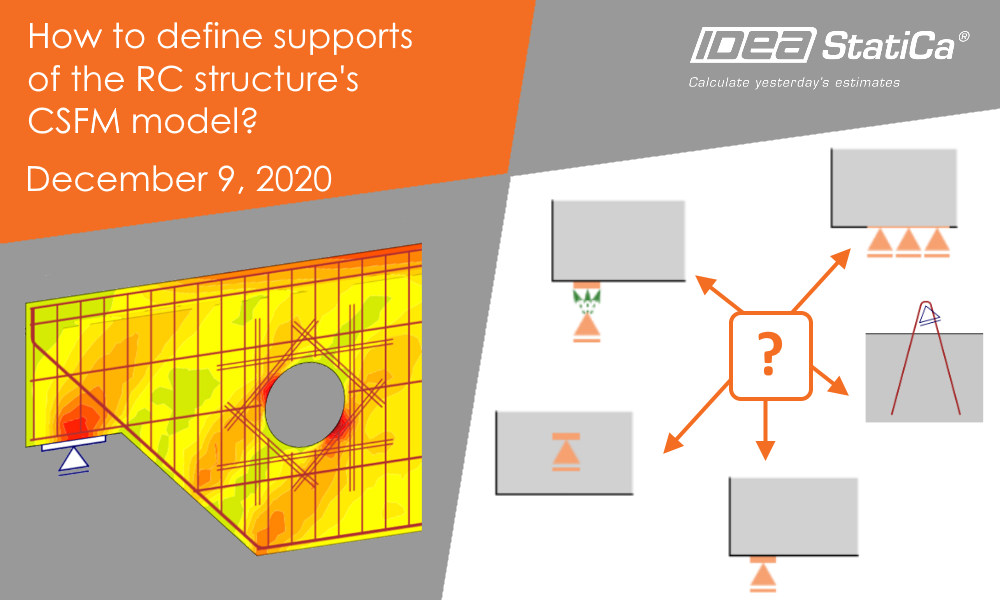How to define supports of the RC structure's CSFM model?
-
2020-12-09T00:00:00.0000000Z(nella tua ora locale, formato 24-ore)
Data webinar:
Partecipa al webinar e scopri di più
- IDEA StatiCa Detail intro
- Types of supports: Point distributed, Bearing plate, Hanging support, Line and Patch support
- Advantages and disadvantages of particular type of support
- Practical examples for each type of support
Relatori

IDEA StatiCa

IDEA StatiCa
Nowadays, FEA software enables analyzing complex structures. The users can choose from an endless amount of models, theories, or analyses. Structural engineers try to capture the real behavior of the structure as accurately as possible. However, all this takes its toll on the user interface. As a rule, the more complex the analysis, the more parameters need to be defined, monitored, or studied. This can lead to lengthy modeling, incorrect entries, and an overall negative attitude toward using more advanced analyses.
IDEA StatiCa apps are developed in such a way to be user-friendly and intuitive, while advanced analyses are running on their background. Difficult assigning of geometric and material models and other various parameters, providing numerical stability of calculations and correct results, have been done by our developers. If we want to analyze any details subjected to any loads, the assignment might become slightly complicated. Therefore, we bring you this webinar, where we will explain and clarify the types of CSFM model supports that can be defined in the IDEA StatiCa Detail. We will discuss all types of support, their advantages, and disadvantages, and provide a practical example of each of them.
Practical example of point distributed support – diaphragm supported by bridge bearings
Point distributed supports are used when supported structures can rotate and the contact stress is almost uniform after their deformation in the surrounding of the support. Especially elastomeric and pot bridge bearings can be modeled by point distributed supports.
Practical example of hanging support
The erecting construction stage may be critical for precast concrete members. This stage can be checked due to the modeling of hanging supports. In the figure, a deformed shape of the precast beam during the erection stage is depicted.
The CSFM (Compatible stress field method) is an innovative method implemented in the IDEA StatiCa Detail app for the design and code-check of concrete details, regions of discontinuities, and walls.
IDEA StatiCa Detail was introduced to the engineering world in 2016. Since then, it brought to its users a true revolution and significant advantages on time-saving, productivity, and safety of concrete structures. This app keeps developing and improving. We are happy to be inspired by your observations and suggestions for improvement, join the webinar, and become an active member of the IDEA StatiCa community.




